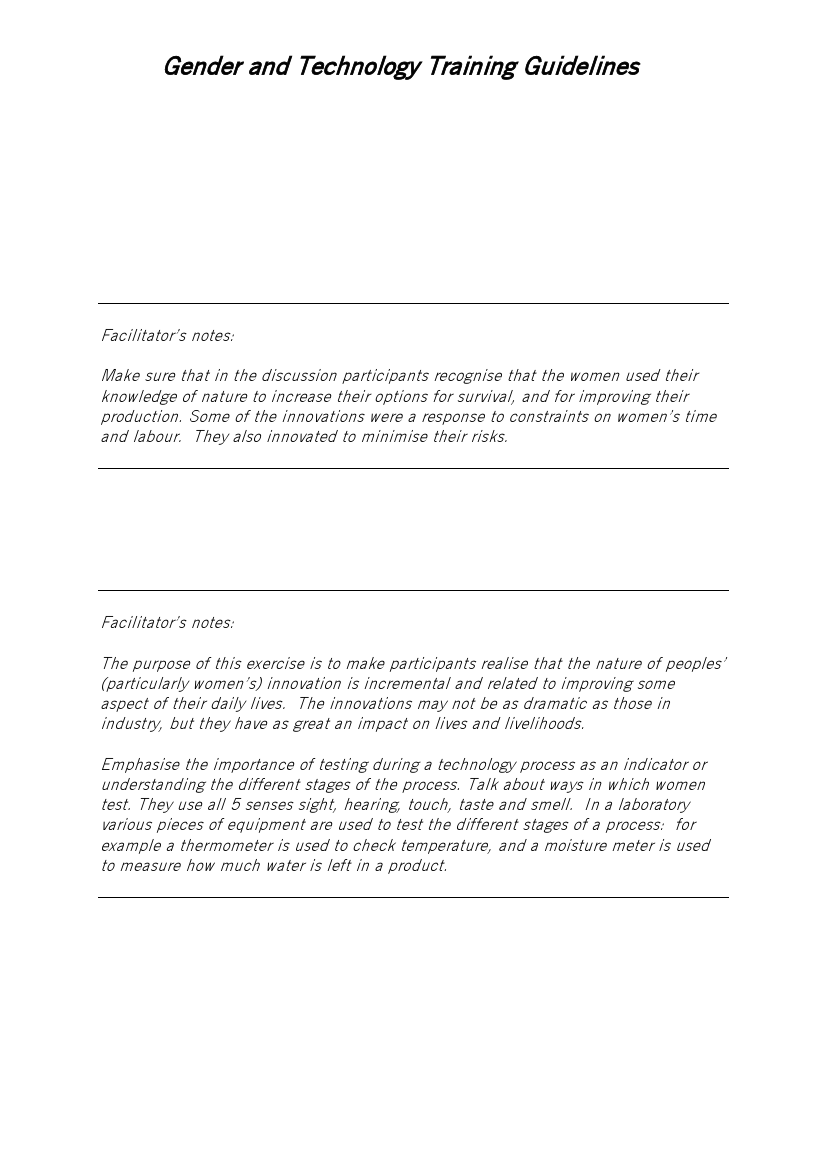
Gender and Technology Training Guidelines
TIME 1 hour
MATERIAL: DIH Posters: Using Nature, Processing Food, Diversifying Work
A story of a ‘conventional invention’ (e.g. the internal combustion engine, the
telephone, the light bulb)
Step 1
Show the posters to the whole group and discuss the messages in the posters.
What are the innovations described in these posters? Why did the women
innovate? What impact did these innovations have on the women’s lives?
Facilitator’s notes:
Make sure that in the discussion participants recognise that the women used their
knowledge of nature to increase their options for survival, and for improving their
production. Some of the innovations were a response to constraints on women’s time
and labour. They also innovated to minimise their risks.
Step 2
Distribute the story of a ‘conventional’ invention. (the invention of the internal
combustion engine, the invention of the telephone) After participants have
read the story, discuss: how does this story differ from the stories of the
women in the DIH posters? what is similar in the two stories?
Facilitator’s notes:
The purpose of this exercise is to make participants realise that the nature of peoples’
(particularly women’s) innovation is incremental and related to improving some
aspect of their daily lives. The innovations may not be as dramatic as those in
industry, but they have as great an impact on lives and livelihoods.
Emphasise the importance of testing during a technology process as an indicator or
understanding the different stages of the process. Talk about ways in which women
test. They use all 5 senses sight, hearing, touch, taste and smell. In a laboratory
various pieces of equipment are used to test the different stages of a process: for
example a thermometer is used to check temperature, and a moisture meter is used
to measure how much water is left in a product.
Step 3
Further discussion on the importance of innovations for survival of
communities and on using innovations - e.g. how can these be used to take
advantage of market opportunities?
31